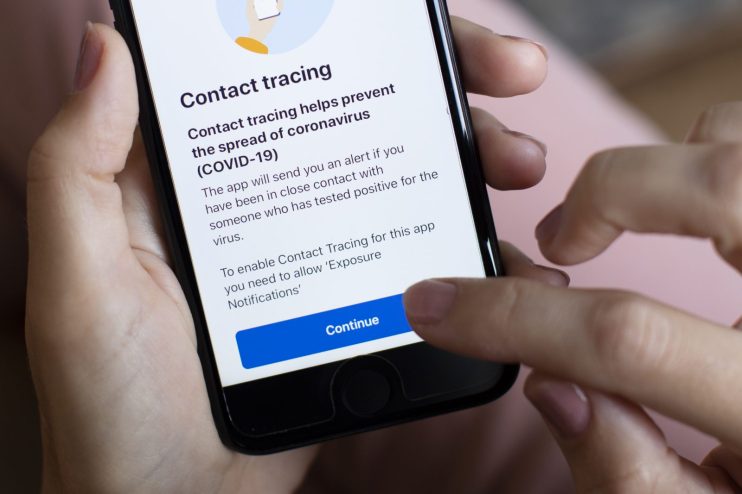Spending watchdog urges government to ‘stop throwing money’ at NHS Test and Trace

The UK’s spending watchdog has urged ministers to “stop throwing money” at NHS Test and Trace, after the beleaguered system last month received an extra £7bn in funding despite repeatedly failing to achieve targets.
In a scathing report on the programme’s performance so far, the National Audit Office (NAO) slammed Test and Trace for failing to deliver sufficient numbers of Covid tests within 24 hours.
The amount of tests being turned around within 24 hours peaked in June at 93 per cent, but saw a rapid deterioration to a low of 14 per cent in mid-October.
Despite targets set out in the government’s Operation Moonshot plans, the number of test results returned within one day was still only 38 per cent by early November.
The NAO also found that while the government had “rapidly scaled up” the operation from a low base, at times “parts of the national tracing service have barely been used”.
In May, the Department for Health and Social Care (DHSC) signed contracts worth up to £720m for the provision of 18,000 call handlers.
However, the NAO found that the proportion of time the call handlers actively worked during their paid hours was just one per cent by mid-June, after reports emerged over the summer of contact tracers sitting idle with little work to do.
Meanwhile, auditors found that almost 3,000 clinical staff on the NHS Test and Trace programme spent just four per cent of their time working.
“DHSC had no flexibility to reduce the number of call handlers under the original contracts, which ran for three months, said the NAO. “This means substantial public resources have been spent on staff who provided minimal services in return.”
It comes after latest figures from the Office for National Statistics (ONS) showed that NHS Test and Trace failed to test around 56 per cent of people thought to have been infected with Covid-19 between May and November.
The app successfully traced just 32 per cent of around 2m Brits thought to have contracted coronavirus in that time.
The poor performance has forced the bulk of London boroughs to pick up the slack by deploying council leaders to call local residents who may have come into contact with the virus.
Analysis by City A.M. last month revealed that almost two-thirds of London boroughs have departed from the national contact tracing scheme.
Redbridge and Hammersmith and Fulham in November joined a list of 21 out of 32 London boroughs that have snubbed the national system in favour of localised approaches to tackling the virus.
Baroness Dido Harding, interim executive of the Test and Trace programme, today praised the scheme for upping its success rate in identifying potential Covid contacts from an average of 60 per cent last month to more than 85 per cent in the week to 2 December.
However, the major driver for the improved performance was a decision to stop making multiple phone calls to the same household in favour of using one call to communicate with all residents at one address.
The NAO noted that while the testing programme reached its target capacity of 500,000 tests a day by the end of October, it was still only utilising 68 per cent of this on average.
Meg Hillier, chair of the Public Accounts Committee (PAC). lambasted the government for “trying to reinvent the wheel” through its ambitions for the Test and Trace programme.
“Testing capacity has risen and it’s easier to get a test locally but Test and Trace’s performance still isn’t good enough,” she said. ‘The government needs to urgently work out what’s going wrong at every step of the process.Throwing more money at the problem clearly isn’t the answer.”
Gareth Davies, head of the NAO, meanwhile commended the government for building and expanding testing infrastructure from scratch, but said: “it has struggled to test and trace as many people as it has capacity to, or to reach the contacts of people testing positive quickly enough”.
“Test and Trace is core to the UK’s pandemic response,” he added. “It must improve its performance with a focus on effective engagement with the public and integration with local efforts to improve tracing.”
Chancellor Rishi Sunak last month unveiled a further £7bn for the contact tracing system, taking its total funding to £22bn since the start of the pandemic.
The figure means NHS Test and Trace’s budget is now more than the combined budgets for England’s police and fire services, which this year will receive £15.2bn and £3bn respectively.
The funding for the Test and Trace programme also dwarfs the amount of cash the government has allocated for coronavirus vaccines.
The UK has so far spent just £2.7bn on vaccines for the UK and low income countries. Sunak yesterday topped up the vaccine spending pot by £738m — just over a tenth of that provided to NHS Test and Trace.